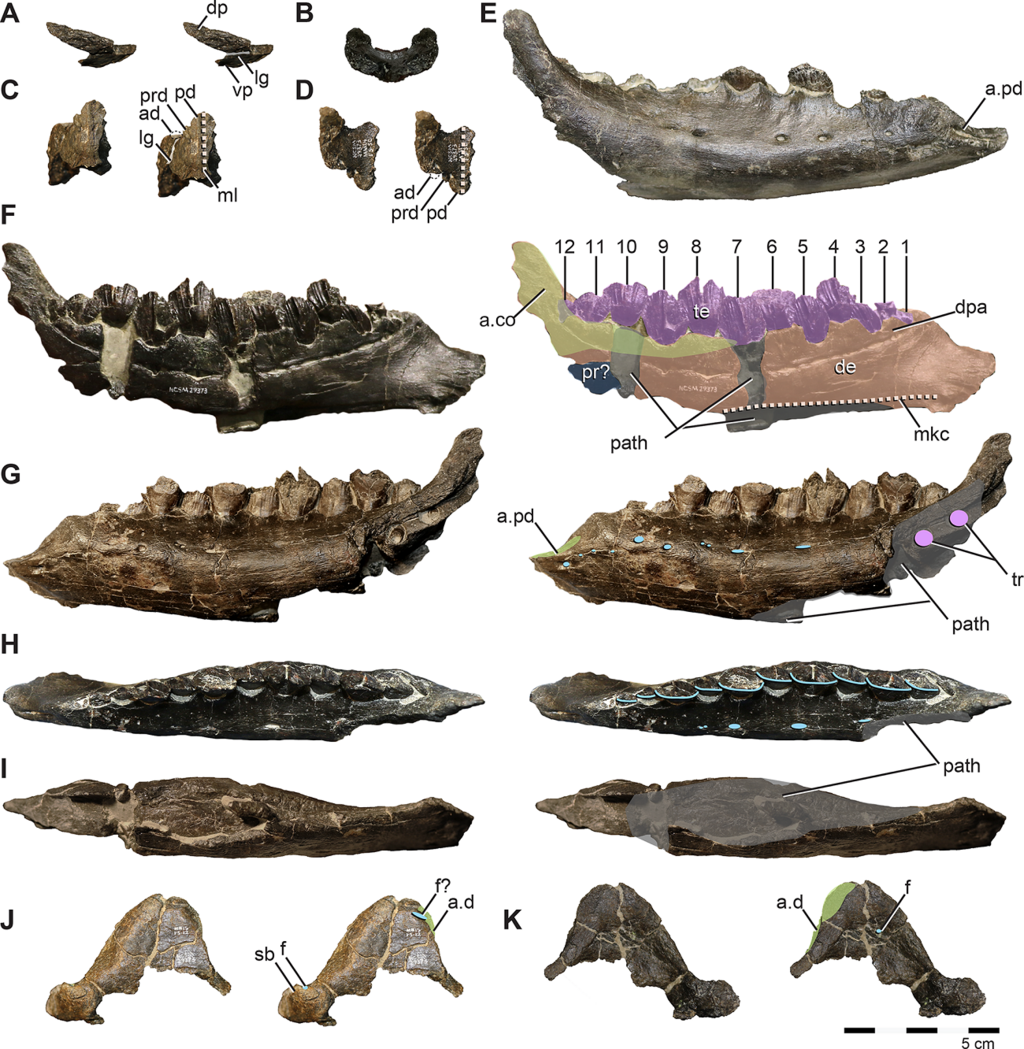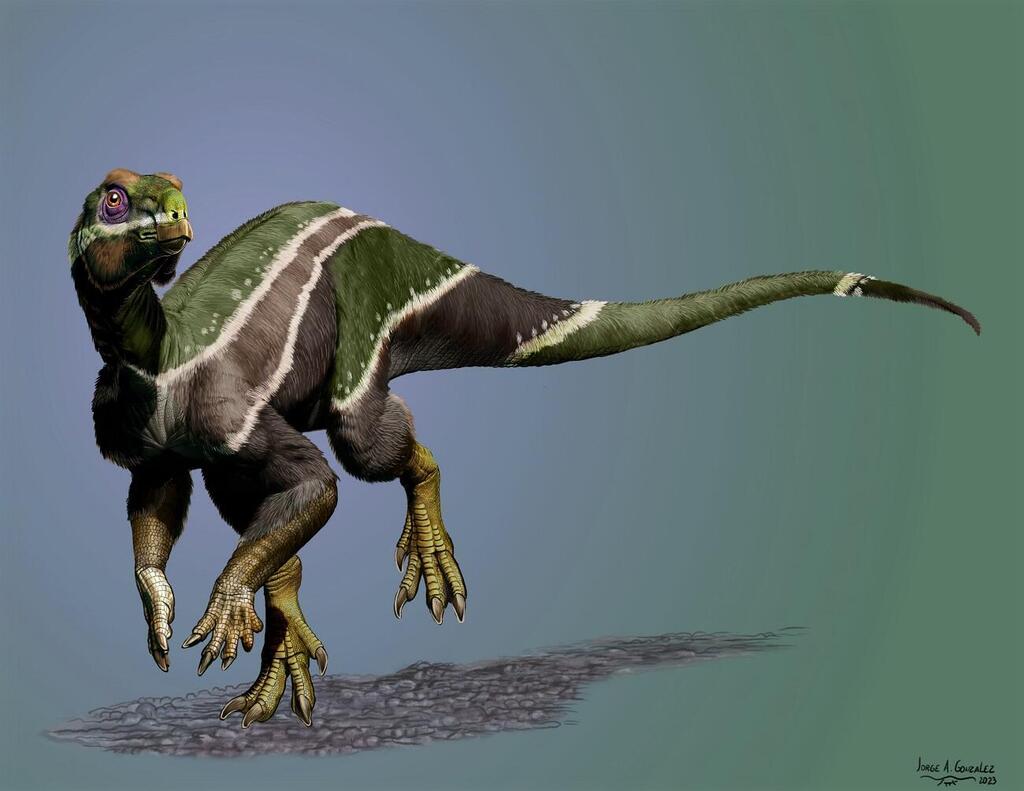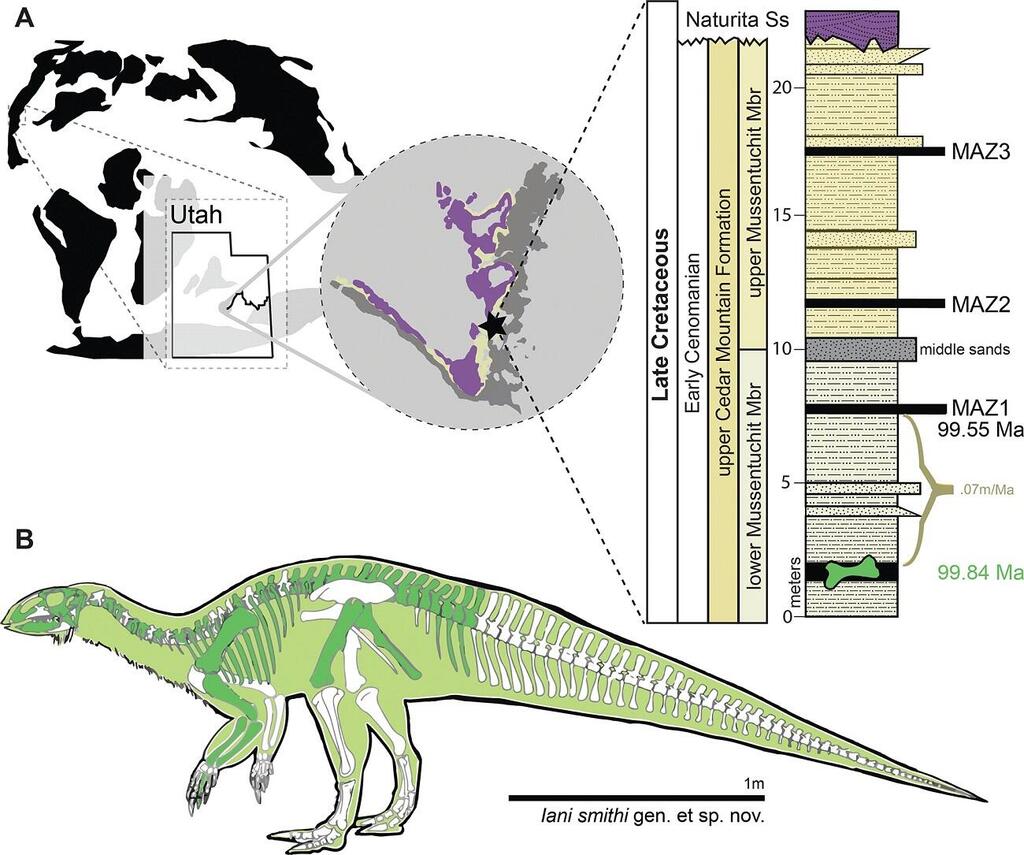Despite extensive research in the field of paleontology, there remains a significant knowledge gap regarding certain periods within the age of dinosaurs. One such enigmatic period is the middle part of the Cretaceous period, spanning approximately 113 million to 83 million years ago.
In recent discoveries, it has come to light that a herbivorous dinosaur, newly identified, may have represented the final remnants of its kind during a time of considerable climatic shifts, where Earth's warming climate instigated profound transformations within the global dinosaur populations.
Dubbed Iani Smithi, this remarkable specimen pays homage to Janus, a Roman deity symbolizing duality, who presided over gateways and transitions. Just as Janus possessed two faces, one gazing into the past and the other into the future, Iani Smithi offers us a glimpse into the ancient world.
This dinosaur belonged to the Ornithopoda, a vast assemblage of herbivorous creatures, and specifically to the renowned hadrosaur family, known colloquially as the "duck-billed dinosaurs" due to their distinctive flat snouts. Among their ranks, one can find illustrious members like Parasaurolophus and Edmontosaurus.
Unveiled in the Cedar Mountain Formation located in Utah, the fossilized remains of this plant-eating dinosaur, including its skull, vertebrae, and limbs, were painstakingly discovered by diligent researchers. The formation of his teeth suggests a solely herbivorous diet. Their groundbreaking findings have been published in the pee-reviewed journal PLoS ONE.
During the mid-Cretaceous era, a time of profound transformation, the natural world experienced a cascade of environmental shifts, profoundly impacting the diverse array of dinosaur species. The surge in atmospheric carbon dioxide levels engendered a remarkable warming of the Earth, accompanied by a rise in sea levels.
As a consequence, dinosaur populations found themselves confined to progressively diminishing territories. The climatic conditions were so temperate that verdant rainforests thrived even at the Earth's polar regions, while the coastal areas yielded to the ascendancy of flowering plants, supplanting the herbivores' primary food sources.
This botanical revolution marked a turning point as herbivorous dinosaurs confronted the challenge of adapting to the changing ecological landscape.
In North America, a momentous transition unfolded as colossal herbivorous sauropods, the behemoths of the land whose remarkable dimensions surpassed those of any other terrestrial creature, faded into the annals of time.
Alongside their departure, the formidable allosaurs, the carnivorous predators that once roamed the ancient landscapes, also succumbed to the ebb and flow of evolutionary change.
Simultaneously, a procession of smaller herbivores embarked on a new chapter, with early horned dinosaurs hailing from the ceratopsian lineage, and theropods such as tyrannosaurs and oviraptorosaurs traversing vast distances from the realms of ancient Asia to stake their claim in this transformative era.
The arrival of these diverse and captivating species marked a profound shift in the tapestry of North American dinosaurs.
"Finding Iani was a streak of luck," says Lindsay Zanno, associate research professor at North Carolina State University, head of paleontology at the North Carolina Museum of Natural Sciences.
"We knew something like it lived in this ecosystem because isolated teeth had been collected here and there, but we weren't expecting to stumble upon such a beautiful skeleton, especially from this time in Earth's history. Having a nearly complete skull was invaluable for piecing the story together."
3 View gallery


Remains of jaws and teeth indicate a plant eater
(Photo: North Carolina State University)
Utilizing the exquisitely preserved skeletal remains as their guide, Zanno and her team embarked on an analysis of Iani's evolutionary connections, unveiling a revelation that left them both astonished and cautiously skeptical.
"We recovered Iani as an early rhabdodontomorph, a lineage of ornithopods known almost exclusively from Europe," Zanno says. "Recently, paleontologists proposed that another North American dinosaur, Tenontosaurus -- which was as common as cattle in the Early Cretaceous -- belongs to this group, as well as some Australian critters. If Iani holds up as a rhabdodontomorph, it raises a lot of cool questions."



